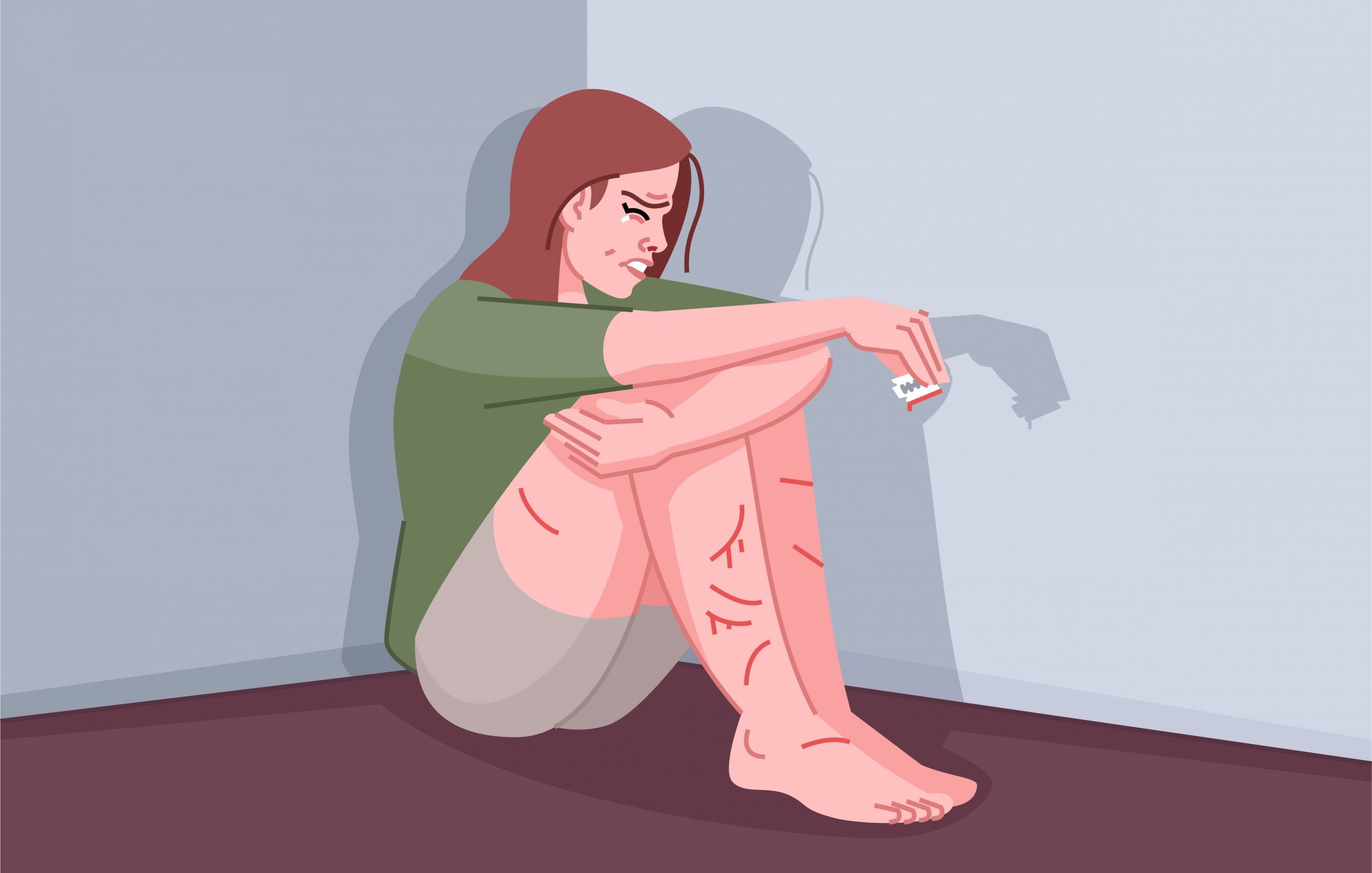In the month of March, we observe Self-harm Awareness month and observed Self-Injury Awareness Day on March 1st. Studies show that self-harm is much more common than you might think. Nearly one in five individuals will deliberately injure themselves during their lifetime.
On average, cutting typically begins during the teenage years, often between the ages of 12 and 14. Between 13-23% of teenagers have burned, cut, or intentionally injured themselves. Also referred to as non-suicidal self-injury, cutting is a self-inflicted, deliberate destruction of one’s own body tissues. A common misconception is that these individuals are trying to kill themselves. Cutters instead self-harm to ‘feel alive’ rather than numb. Self-injury does not include bodily injury that is socially sanctioned, such as nose or belly button piercings. Besides cutting, individuals may burn themselves, carve words or symbols into their skin, pull their hair, or bang their head against a wall.
To those that do not understand the reasoning behind self-injury, it may seem incomprehensible. There are many reasons that individuals choose to self-injure:
- Physical Pain Removes Emotional Pain
The physical pain caused by self-injury can diffuse negative emotions the person might be feeling, providing a sense of relief or calm. Self-injury is extremely reinforcing or even addictive because it works instantly. Individuals who self-injury often describe a sensation of releasing pressure, or momentary escape.
Over time, the brain will begin to connect the feeling of relief from emotional pain with self-injury, creating a difficult to resist craving to continue the behavior.
Most individuals who self-injure practice the behavior for two to four years, on average. However, many may continue to do so beyond this time frame. Frequency of self-injury can also fluctuate from daily, to even weeks, months, or years between episodes.
- Self-Esteem
Previous studies have shown that the greatest difference between those who self-injure and those who do not is the intensity of feeling a dissatisfaction with themselves. Those who self-injury more commonly report harsh self-criticism and self dissatisfaction.
- Creating A Physical Feeling
For many, self-injury is a way to stop feeling numb. This is especially true for those with a history of trauma.
- Creates an Outlet
Self-injury provides an outlet for emotional pain, particularly for those with a poor home life, or those who believe that it is not okay to feel bad emotions. Self-injury becomes an acceptable way to feel the pain they are not ‘allowed’ to feel emotionally.
Preventing Self-Harm
In previous studies of those who formerly self-harmed, 40% stopped because they found ways to better manage their emotions, 24% stopped because they felt someone cared for them, and 27% reporting simply outgrowing the behaviour.
It’s vital to match a solution for stopping self-harm behavior with the reason for doing it. If you or a loved one is struggling with self-harm, consider the reasoning why the behavior is occurring, Think of ways to feel emotions safely if self-harm is a way to feel emotions. This could be through listening to music that matches how you feel, journaling, or exercising.
Because of the addictive nature of the behavior, self-injury can be challenging to stop. It is important that you reach out to a mental health professional if you or someone you love needs help and support.
A self-harm crisis text line exists for immediate support. Visit https://www.crisistextline.org/topics/self-harm/




